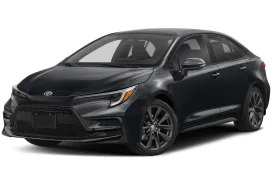Back in December, the Insurance Institute for Highway Safety (IIHS) revealed its newly reworked moderate front overlap crash test. The difference being that there was now a dummy sized to represent a 12-year-old kid or a small woman in the back to evaluate rear passenger safety. According to the organization, the odds of a fatality in the rear had exceeded that of the front, which for years had been the more dangerous position. While the newly modified test not yet part of its official testing for Top Safety Pick awards, it will certainly become the standard, and the organization is testing select vehicles with it in the meantime. It recently tried out five small cars, mostly sedans, and found the rear seat protection needs significant improvement.
The five vehicles tested were the Honda Civic, Toyota Corolla, Subaru Crosstrek, Kia Forte and Nissan Sentra. The Civic and Corolla did best, but only got the second-highest rating of "Acceptable." The Crosstrek, Forte and Sentra all were rated with the lowest "Poor" rating. Across the board, all vehicles showed submarining with the seatbelts, which is when the lap-belt portion slides up from the waist, increasing the chance for abdominal injuries. The Civic and Corolla otherwise performed well in protecting the three areas the IIHS looks at: chest, thigh and the head and neck. The latter three models showed much higher risk of head and neck and chest injuries, with ratings between "Poor" and "Marginal."
These small cars are certainly not alone in showing a disparity between front and rear safety. Many other vehicles the IIHS tried with the new overlap test did poorly as well. So it's certainly not just an issue with small cars, but across segments.
The IIHS does have a few suggestions for improving rear-seat results. In the video at top, seat-belt tensioners along with force limiters (in order to hold the passenger in place at first, but to start to release to prevent causing harm from the belt) are on the list.
Also, the IIHS stressed that, despite rear-seat safety lagging, it's still very much the safest place for children. The reason for this is that airbags can be harmful to children. Furthermore, the rear-seat is not less safe than it used to be. The reason the front is becoming safer is because of massive improvements in front passenger safety with a focus on airbags, seatbelts, tensioners and structural improvements.
Related video:





Sign in to post
Please sign in to leave a comment.
Continue